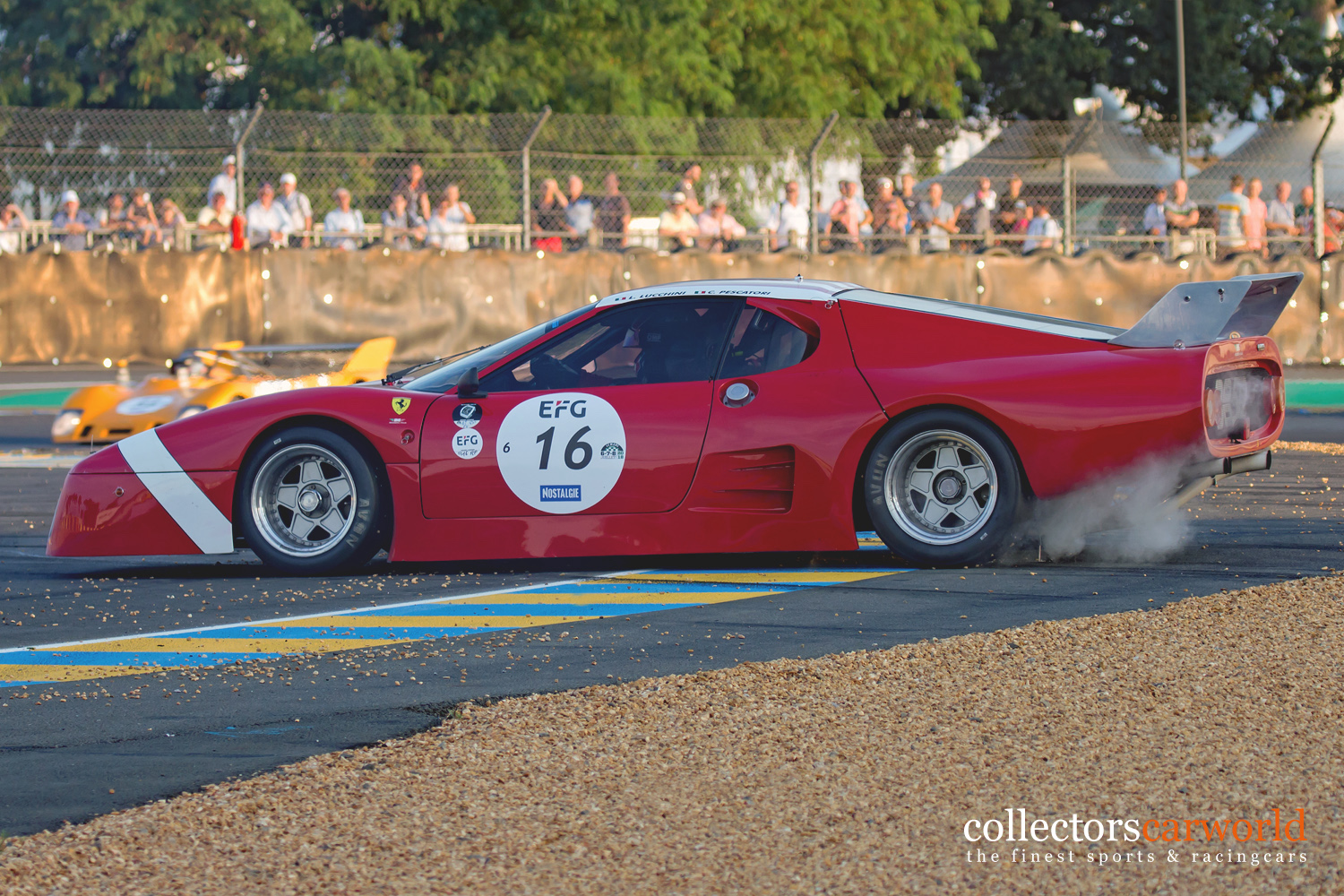Ferrari completely withdrew from sportscar and GT racing after the 312 P (B) project to focus completely on Formula 1. However, Ferraris kept on being competed by privateers, resulting in three GT class victories at the 24 Hours of Le Mans in 1972, 1973 and 1974. These victories were scored by privately entered 365 GTB/4 Daytonas. These were not born as racers, but modified after completion to ‘Competizione’ spec under the supervision of the factory.

When the 365 GTB/4 Daytona road cars were replaced by the mid-engined 365 GT4 BB, the new car was the obvious choice for further GT-racing. The factory was completely focussed on the F1 effort and was not able and/or willing to help out privateers who wanted a competition version of the BB. So for the first time since Ferrari started building cars, no Ferrari took part at Le Mans in 1976. The rules for 1977 were changed to allow IMSA cars to run, which made the NART modified 365 GT4 BB eligible to campaign. Eventually three 365 GT4 BBs were modified by private teams, with NART’s 16th (scratch) / 5th (in class) place finish at Le Mans in 1977 as their best result.
Meanwhile Ferrari had launched the 512 BB at the 1976 Paris Motorshow as a replacement for the 365 GT4 BB. It was similar in design to the 365, but the engine was increased in size from 4.4 to 5 litres. For the 1978 Le Mans three of Ferrari’s best known privateers, Pozzi in France, Garage Franchorchamps in Belgium and of course Luigi Chinetti’s NART in the USA, modified four 512s. Non of them survived the race and the only Ferrari to finish was NART’s old 365.

After securing two driver’s titles and three constructer’s titles from 1975 – 1977, Ferrari found time again for other competition efforts. After strong demands from the aforementioned privateers the Scuderia set out to create a racing version of the 512. Pininfarina was commissioned to create a very streamlined silhouette body, to allow for high speeds at Le Mans’ long straights. Ferrari themselves put the chassis on a diet, taking the weight down with around 200 lbs. Unfortunatley the huge new body added about the same, so in all no weight was saved. The flat 12 engines were fitted with Lucas Fuel Injection and power was increased to 460-480 bhp. At the end of its career power was up to 500 bhp.
Porsche and the 512 BB’s gearbox prevented the 512 BB LM from ever becoming a success. Problems with the gearbox were two-fold. To reduce the wheelbase, Ferrari mounted the 12 cylinder engine on top of the gearbox, but with so much weight high up in the car handling was severely hampered. The second problem was its reliability; Ferrari increased the engine output by over 100bhp, but did not modify the gearbox to cope with the added power.
While Ferrari’s clients fielded the 480 bhp BB LMs, the competion entered 700+ bhp Porsche 935s. In the first Le Mans 24 Hours the 512 BB LMs took part in, the first four spots were filled with Porsches, with the Garage Franchorchamps 512 finishing in a lowly 12th position. Over the next few years the LM was further developed, stronger gearbox, more power and less weight, but it was never really a contender. Highlight on the 512 BB LM’s result sheet is a class victory in the 1981 Le Mans, where a Pozzi entered LM beat the 935s! By 1984 the 512 BB LM was left obsolete by regulation changes and it took Ferrari almost two decades to consider constructing GT cars again.
Find out more on ultimatecarpage.com

About our photographer Rainer Selzer
Rainer Selzer is always ready for a big shot and is focused on historic motorsport.
He is working with us for over three years and visits motorsport events, classic car meetings or car museums. Follow him on instagram @rs65photos or visit his homepage www.rs65photos.com for more!
Report by ultimatecarpage.com
Photos by rs65photos.com










